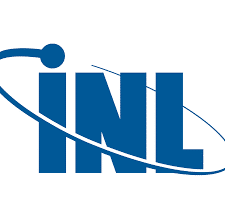PROCEEDINGS
3
REPORTS
4
PHD STUDENTS
2
MSC STUDENTS
1
The aim of Modelling Part of the DRG project is to aid in the advancement of the methods that can be applied in the modelling of the physical processes occurring in the roots of volcanic geothermal systems, with the purpose of illuminating the overall process controlling the upwards heat transfer from the heat sources as well as improving and advancing the methods that are applied in conventional geothermal reservoir modelling and, consequently, used for geothermal resource management. The heat transfer from the roots up to shallower levels is a complicated process involving the flow of magma, the flow of fluids (two-phase and/or supercritical water), and heat transfer as well as thermo-elastic rock mechanics and chemical processes. In conventional models of the geothermal reservoir, used for assessing capacity and for management purposes during utilization, heat sources are idealized as a steady inflow of mass and energy, at relatively shallow depth, at the bottom of the models.
There is, however, need to incorporate the heat sources more accurately in the models, both as specific intrusions in contact with the fluid circulation in the geothermal systems below the production reservoirs and their highly transient nature. The Exploration Part of the DRG project is extensively based on general conceptual models emerging from Part 1 of the project.
Partners




Publications
An iTOUGH2 equation-of-state module for model¬ing supercritical conditions in geothermal reservoirs,; Magnusdottir, L., Finsterle, S., (2015); Geothermics, 57, 8–17.
Simulating Supercritical Water in Magmatic Geothermal Reservoirs; Magnusdottir, L., Finsterle, S. (2015), TOUGH Symposium 2015, Lawrence Berkeley National Laboratory, Berkeley, California, Conference proceedings.
Modeling the Deep Roots of Geothermal Systems; Magnusdottir, L. (2014); Thirty-Ninth Workshop on Geothermal Reservoir Engineering, Stanford University, Stanford, California, 11 pp; Conference proceedings.
Extending the Applicability of the iTOUGH2 Simulator to Supercritical Conditions; Magnusdottir, L., Finsterle, S. (2015), World Geothermal Congress, Melbourne, Australia, 8 pp; Conference proceedings.
The Deep roots of geothermal systems in volcanic areas: Boundary conditions and heat sources in reservoir modelling; Gunnarsson, G., E.S.P. Aradóttir, E.S.P. (2014, May 23); Transport in Porous Media, 17pp., DOI 10.1007/s11242-014-0328-1.
The roots of volcanic geothermal systems; Axelsson, G., Árnason, K., Franzson, H., Gunnarsson, G., Hreinsdóttir, S. Júlíusson, E. (2014, April 10-11), Deep Geothermal Days, Paris.


